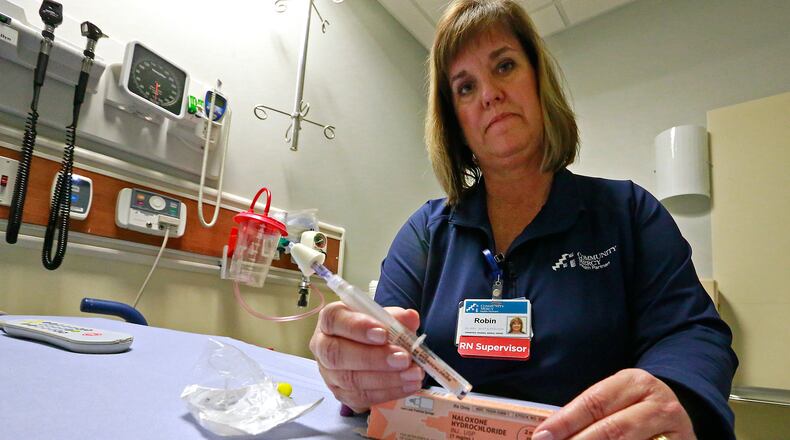Here are 5 things you should know about drug overdoses and the impact in Clark County.
1. Record deaths: According to Clark County Coroner Dr. Richard Marsh, the number of unintentional overdoses in 2015 was 72, nearly double of the number in 2014 and a record.
Last year the county saw 68 overdose deaths through November. Since that time, 19 more deaths may be drug-related, pending the results of autopsies.
Accidental overdoses claimed 3,050 lives in Ohio in 2015, up 20.5 percent over 2014.
2. Refusal of Treatment: The number of overdoses is likely higher because some patients refuse transport to a hospital after being revived by first responders.
On average five or six overdose patients visit an ER in Springfield per day, but that jumped during recent spikes in overdoses to 19 overdose patients.
3. Narcan supplies: Naloxone, commonly known by the brand-name Narcan, is a medication that can reverse an overdose caused by prescription opioids, heroin or fentanyl.
When administered during an overdose, naloxone blocks the effects of opioids on the brain and can restore breathing in a matter of minutes.
MORE: Rash of overdoses in Springfield strains resources
Narcan can be purchased at pharmacies without a prescription. Statewide, there are more than 1,000 pharmacies that carry Narcan.
RELATED: Overdose antidote available at stores in Clark, Champaign counties
Narcan was approved by the FDA in late 2015.
4. EMS Response Times: At one point on Friday, every available Springfield Fire/Rescue Division ambulance was tied up, according to Capt. Charles Alexander.
The department hasn’t gotten to the point where they weren’t able to respond to a call, he said, but if ambulances continue to be tied up with overdose calls, fire engines could begin to be dispatched for EMS runs.
5. Solving the crisis: Services are available in Clark County to help bring an end to the epidemic.
McKinley Hall provides both in-patient and out-patient treatment and has seen an increase in patients at the recovery facility.
DETAILS: Springfield clinic sees cautious hope in fight against heroin
MORE: Clark County leaders: More needed to fight drug problem
In late 2016, Congress authorized $181 million in new spending to help curb the epidemic.
The Obama administration had announced an additional $17 Million would be spent to help law enforcement agencies deal with increased heroin and opioid abuse.
About the Author
